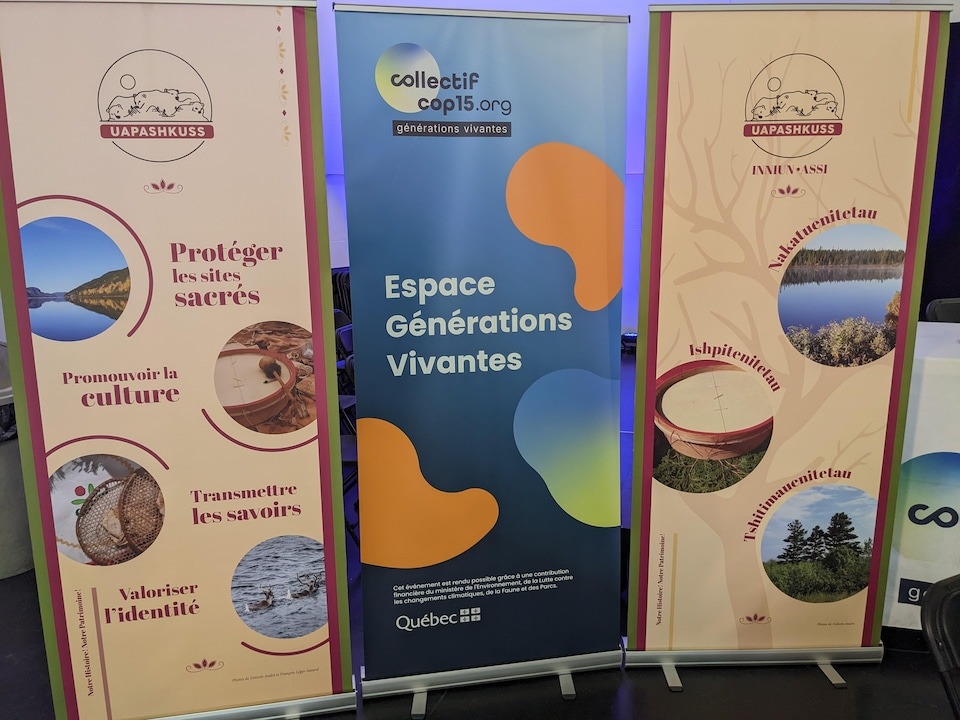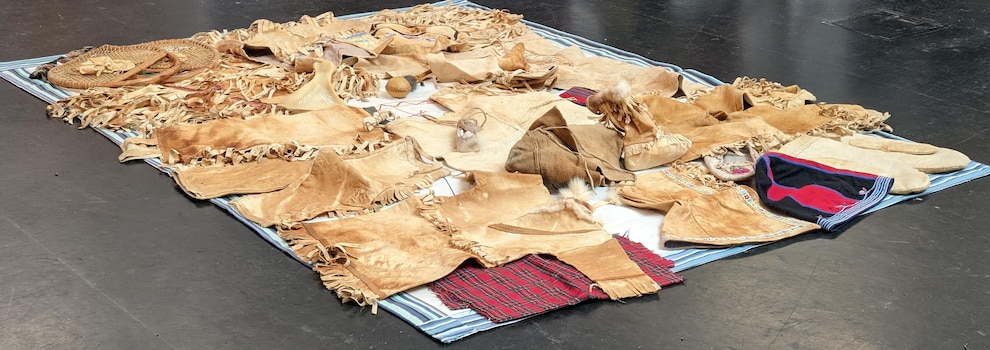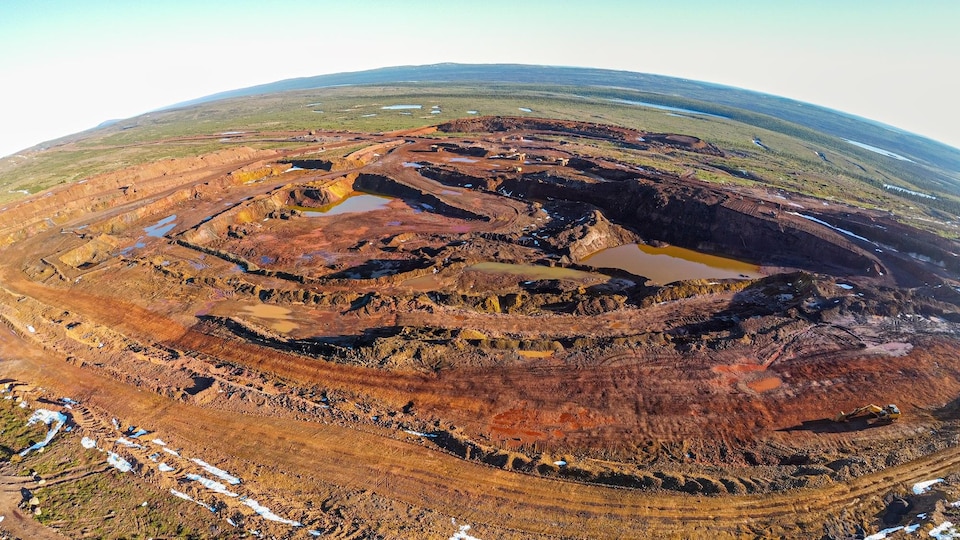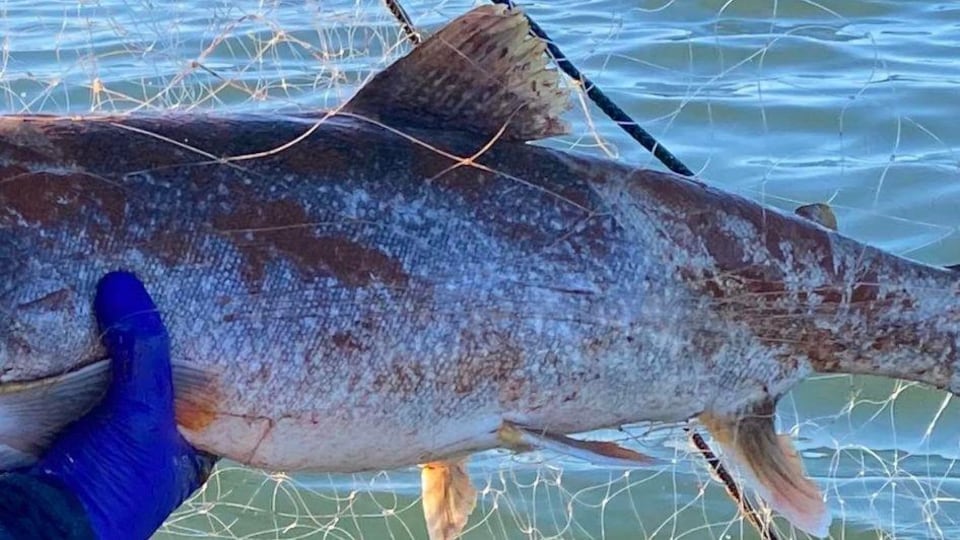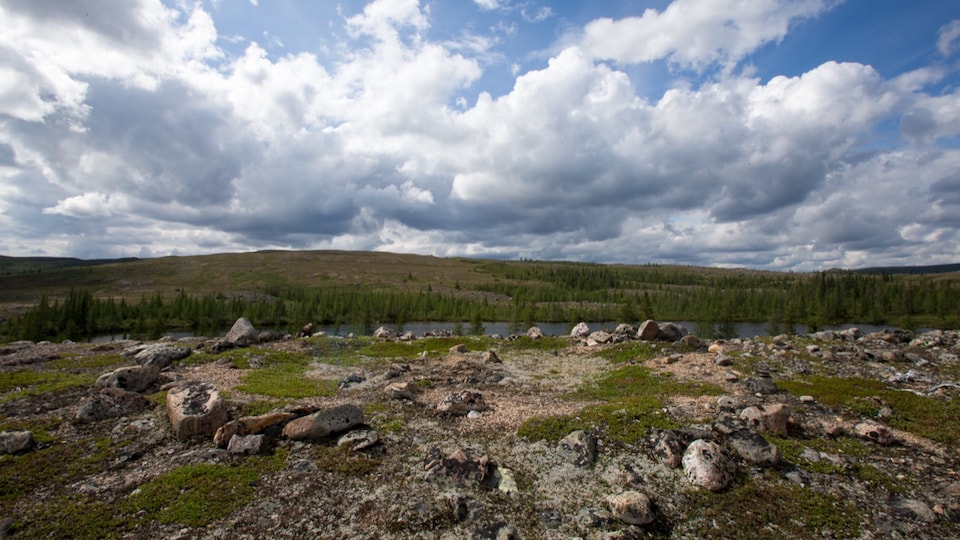The eight sites are distributed in Quebec and Labrador, between the mouth of the Moisie River, on the North Shore, and the George River, in Nunavik.
They correspond to key places traditionally frequented by the Innu during their annual journeys to the heart of their immense territory, Nitassinan.
The sites that are concerned by the process were identified by elders, some of whom have now departed to the other world
says Dolorès André, from Matimekush-Lac John, project manager for Uapashkuss, a word that means where the snow is on the mountaintops
in the Innu language.
Uapashkuss describes one of these eight places as the home of the spirits of our ancestors and the master of the caribou
(Papakassik). Others house burials or contain vestiges of past life. The mouth of the Moisie River (Mishta-shipu in Innu), place of departure and arrival of the annual trip, is also part of the list.
The organization wants to be apolitical and independent of band councils. She considers herself the guardian of sacred Innu sites. The conservation and revaluation of these places, for the Innu, are closely linked to the revaluation of their culture, which has been undermined by residential schools, colonization and modernity.
Anne-Marie André, Dolorès’ mother, explains that the protection of these sites is a role that was entrusted to the Innu, a long time ago, by the animals of the forest and their master Papakassik.
These are stories drawn from the oral tradition, which are central to the spiritual worldview and traditional practices of this people.
Living with Animals and Talking to Them in Thought
My grandmother told me that when we went to pick blueberries, we lived with the animals and we talked to them in our thoughts, says Anne-Marie André. One day, they told us that there were too many animals and Innu living here. So some left, and they appointed us guardians of the earth. It had to be kept clean, as it always has been. But we replied that it was going to become difficult, because there were more and more foreigners arriving by boat and who did not live in the same way…
Biodiversity Guardians
This role of guardians of the earth
indigenous peoples around the world has been highlighted many times in the context of COP15, which is currently taking place in Montreal.
This meeting on the protection of biodiversity welcomes 15,000 delegates from all over the world discussing the proposal to protect 30% of the planet by 2030.
Indigenous peoples have been invited to submit topic proposals, but Dolorès André explains that it is above all those concerning major scientific research that are very substantial that are retained
.
It’s not our strength, we don’t necessarily have doctorates and the means to carry out major scientific studies, but in the end, it’s our territory and our culture that are affected by large mining operations and other
she adds.
A polluted territory
In the Schefferville region, where the Innu community of Matimekush-Lac John is located, mining operations have been transforming the territory for years.
Whether through contaminated water spills or the iron dust that spreads during the train transport that has been going on for decades between the mines of Schefferville and the city of Sept-Îles, the environment of Nitassinan des Innus are in danger of being disturbed forever.
Iron dust is everywhere, it settles on our medicinal plants, on Labrador tea and on lichen, which is the main food of caribou
explains Dolores André.
She says she saw lately a video filmed near Matimekush where a beaver was seen entering the water and spreading a large red stain […] it’s so sad to see this…
.
This red dust also brings health problems, since we can’t see it, but we eat the caribou which feed on lichen covered with iron, we eat the fish and we breathe the air which is polluted
she adds.
When you boil Labrador tea, there is always a dust left in the cauldron, and you can’t drink it
adds his mother, Anne-Marie.
That Innu sacred places become land reserves for the purposes of protected areas would, first of all, protect the natural environment.
Designation as a sacred natural site, for its part, would send a clear and unique message of recognition of the importance of Innu culture and spirituality.
A culture at risk
Since the forced sedentarization, things have changed, and we are witnessing a radical modification of the traditional Innu way of life.
Before, we found everything we needed in nature, underlines Dolorès André. Food, tools, fir branches to insulate our tents, stars to guide us…
” We need nature, and it needs us. Everything was circular in our way of life, our culture and our spirituality. »
My mother said to me: “I carried you in my belly, which is in the shape of a circle, our ancestors were born in the tent, which was in the shape of a circle”, she adds. When we eat and dance the makusham, we do it in the shape of a circle.
We traveled the territory in a circular way, with the seasons. Life, biodiversity, all that, well it’s all circular!
Innu culture is linked to the territory. Like this one, the culture was greatly disrupted by colonization, which came to a head in residential schools for Native people.
” When they took the young people, they did it in square cars, they put them in square buildings, they sat them on desks, in front of the blackboard. It was all square. My mom used to tell me, “The only thing I liked was the little pink eraser, but that’s because I thought it was candy.” They slept in square beds, and they even cut their hair square. »
It is among other things through the protection of sacred sites that Uapashkuss wants to contribute to the revaluation of culture.
The Innu still occupy these sites. There are more and more young people who go there to recharge their batteries, learn about their history, that of their ancestors and reconnect with the land. It’s part of our healing
adds Dolores André.
A necessary education
In a second phase, the Uapashkuss group would like to create an Innu knowledge center, which would make it possible to keep the culture alive, as more and more elders, the knowledge holders, leave us
says Dolores André.
It would also make it possible to educate non-native people who would like to visit sacred sites.
This aspect is essential, because Uapashkuss wishes to avoid that the sites are used for tourist purposes by people who do not know or understand the importance of the place where they are.
The organization currently avoids providing a precise map of the sacred sites, to prevent anyone from embarking on a North Compostela
.
Some sites have fragile ecosystems, and we saw beer cans or trash left by kayakers or adventurers
says Dolores André.
Three of the eight sites in Quebec have obtained protected area status against any exploitation that would endanger their environment. But there is still a long way to go before all the sites supported by Uapashkuss are recognized as sacred natural sites.
Uapashkuss wants to protect sacred places at the base of a thousand-year-old spirituality | COP15

